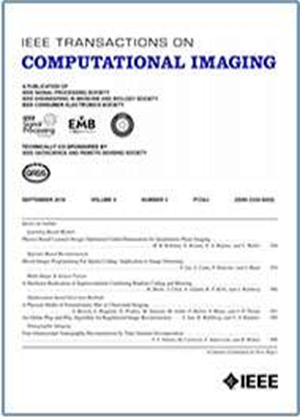fgf2f - udiff:用于多模态缺失MRI合成的频率引导和粗到细统一扩散模型
IF 4.2
2区 计算机科学
Q2 ENGINEERING, ELECTRICAL & ELECTRONIC
引用次数: 0
摘要
多模态磁共振成像(MRI)对脑肿瘤的诊断和治疗至关重要。然而,由于扫描时间的限制,扫描损坏,伪影,运动和造影剂不耐受,通常会观察到缺失模式。缺失MRI的合成已成为解决临床实践和研究中模态不足局限性的一种手段。然而,仍然存在一些挑战,如泛化差、非线性映射不准确、处理速度慢等。为了解决上述问题,我们提出了一种新的统一综合模型,即频率导向和粗到细统一扩散模型(FgC2F-UDiff),设计用于多个输入和输出。具体而言,粗到细统一网络(CUN)充分利用了扩散模型从全局到细节的迭代去噪特性,将去噪过程分为粗和细两个阶段,增强了合成图像的保真度。其次,频率引导协同策略(FCS)利用适当的频率信息作为先验知识来指导统一的、高度非线性映射的学习。第三,特定-加速混合机制(SHM)集成特定机制,加速扩散模型,增强多对多综合的可行性。广泛的实验评估表明,我们提出的FgC2F-UDiff模型在两个数据集上取得了卓越的性能,并通过包括定性观察和定量指标(如PSNR SSIM, LPIPS和FID)在内的综合评估进行了验证。本文章由计算机程序翻译,如有差异,请以英文原文为准。
FgC2F-UDiff: Frequency-Guided and Coarse-to-Fine Unified Diffusion Model for Multi-Modality Missing MRI Synthesis
Multi-modality magnetic resonance imaging (MRI) is essential for the diagnosis and treatment of brain tumors. However, missing modalities are commonly observed due to limitations in scan time, scan corruption, artifacts, motion, and contrast agent intolerance. Synthesis of missing MRI has been a means to address the limitations of modality insufficiency in clinical practice and research. However, there are still some challenges, such as poor generalization, inaccurate non-linear mapping, and slow processing speeds. To address the aforementioned issues, we propose a novel unified synthesis model, the
Frequency-guided and Coarse-to-fine Unified Diffusion Model (FgC2F-UDiff)
, designed for multiple inputs and outputs. Specifically, the Coarse-to-fine Unified Network (CUN) fully exploits the iterative denoising properties of diffusion models, from global to detail, by dividing the denoising process into two stages—coarse and fine—to enhance the fidelity of synthesized images. Secondly, the Frequency-guided Collaborative Strategy (FCS) harnesses appropriate frequency information as prior knowledge to guide the learning of a unified, highly non-linear mapping. Thirdly, the Specific-acceleration Hybrid Mechanism (SHM) integrates specific mechanisms to accelerate the diffusion model and enhance the feasibility of many-to-many synthesis. Extensive experimental evaluations have demonstrated that our proposed FgC2F-UDiff model achieves superior performance on two datasets, validated through a comprehensive assessment that includes both qualitative observations and quantitative metrics, such as PSNR SSIM, LPIPS, and FID.
求助全文
通过发布文献求助,成功后即可免费获取论文全文。
去求助
来源期刊

IEEE Transactions on Computational Imaging
Mathematics-Computational Mathematics
CiteScore
8.20
自引率
7.40%
发文量
59
期刊介绍:
The IEEE Transactions on Computational Imaging will publish articles where computation plays an integral role in the image formation process. Papers will cover all areas of computational imaging ranging from fundamental theoretical methods to the latest innovative computational imaging system designs. Topics of interest will include advanced algorithms and mathematical techniques, model-based data inversion, methods for image and signal recovery from sparse and incomplete data, techniques for non-traditional sensing of image data, methods for dynamic information acquisition and extraction from imaging sensors, software and hardware for efficient computation in imaging systems, and highly novel imaging system design.
 求助内容:
求助内容: 应助结果提醒方式:
应助结果提醒方式:


